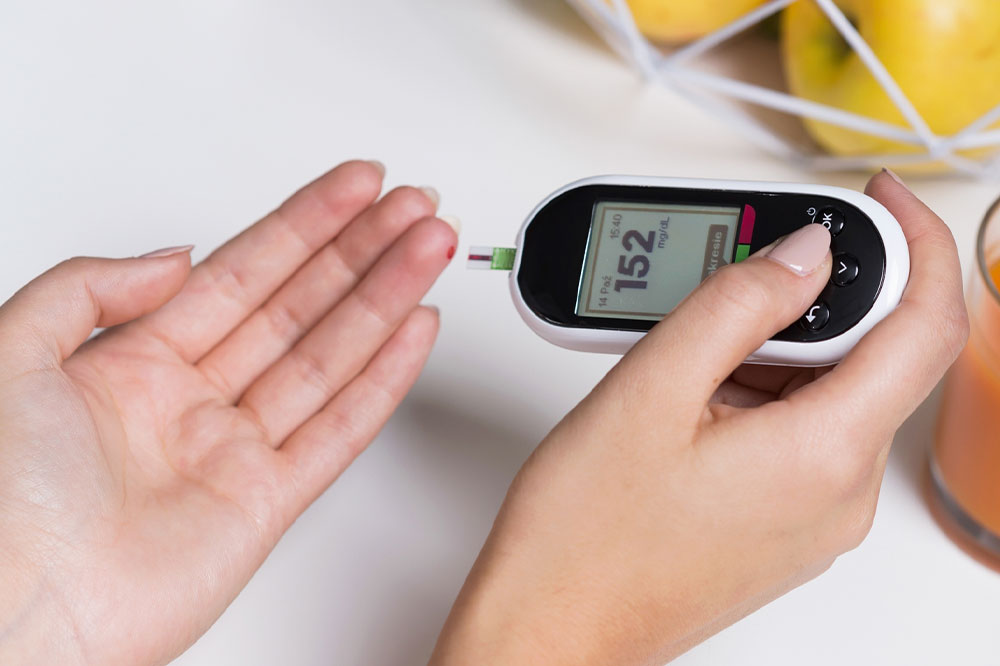How to Detect Early Signs of Diabetes and Take Preventive Action
Discover the essential early signs of diabetes and learn effective strategies for detection and management. Recognizing symptoms like persistent hunger, frequent urination, blurred vision, and slow wound healing can significantly improve health outcomes. This comprehensive guide emphasizes the importance of proactive screening, lifestyle modifications, and timely medical intervention to prevent severe complications. Whether you are at risk or want to stay ahead of potential health issues, understanding these early indicators empowers you to take control of your health and maintain optimal well-being.

How to Detect Early Signs of Diabetes and Take Preventive Action
Diabetes mellitus is a widespread metabolic disorder that impacts millions across the globe. Early detection is vital because it enables timely intervention, which can prevent severe complications like cardiovascular disease, nerve damage, and kidney failure. Recognizing the initial indicators of diabetes allows individuals to seek medical advice promptly, adopt healthier lifestyles, and manage their condition effectively. This comprehensive guide explores the key signs to watch for, differences between types of diabetes, and effective prevention strategies to maintain optimal health.
Understanding the Early Signs of Diabetes
Diabetes often begins subtly, with symptoms that can be mistaken for other common ailments. The initial signs are usually mild but are critical clues indicating that the body’s sugar regulation system is not functioning correctly. These signs can manifest differently depending on whether an individual has Type 1 or Type 2 diabetes, but some symptoms tend to be universal across both forms.
Recognizing the Common Early Symptoms
Identifying the early symptoms of diabetes can dramatically improve outcomes by prompting early medical intervention. The most typical signs include:
Persistent Hunger and Fatigue: Feeling unusually hungry despite eating adequate amounts, coupled with persistent tiredness, often results from the body's inability to convert glucose into energy efficiently. Insulin resistance or deficiency prevents glucose from entering cells, leading to energy deficits and increased hunger.
Frequent Urination and Excessive Thirst: Elevated blood sugar levels cause the kidneys to work overtime to filter out excess glucose. This leads to increased urine production, which in turn causes dehydration and triggers constant thirst.
Dry Mouth and Itchy Skin: Losing fluids through frequent urination can dry out mucous membranes and skin, leading to discomfort and itchiness.
Blurred Vision: High glucose levels cause fluid to shift in the eyes, affecting the shape of the lens, impairing focus, and causing blurry vision.
Yeast Infections: Excess glucose in the bloodstream supports overgrowth of yeast, especially in warm, moist areas of the body like the groin and underarms, leading to recurrent infections.
Slow Healing of Wounds and Numbness: Elevated blood sugar damages blood vessels and nerves, impairing circulation and sensation, which hampers wound recovery and increases the risk of infections.
Specific Symptoms Related to Type 1 Diabetes
Type 1 diabetes typically develops quickly and is often accompanied by more acute symptoms. These can include rapid and unintentional weight loss, persistent nausea, vomiting, abdominal pain, rapid breathing, and a fruity odor on the breath—signs of ketoacidosis, a life-threatening complication requiring immediate medical attention. This form of diabetes often appears in children and young adults, making early detection crucial for effective management.
Who Should Be Concerned?
While anyone can develop diabetes, individuals over the age of 45, those with a family history of diabetes, obesity, sedentary lifestyles, high blood pressure, or abnormal cholesterol levels are at increased risk. Regular screening is recommended for high-risk groups, especially if experiencing any early warning signs.
Diagnostic Tests for Diabetes
If you notice symptoms or belong to a high-risk group, medical tests are essential for confirmation. These include:
Fasting Blood Glucose Test: Measures blood sugar after an overnight fast.
Oral Glucose Tolerance Test (OGTT): Assesses blood sugar levels before and after drinking a sugary liquid.
Hemoglobin A1c Test: Reflects average blood glucose over the past 2-3 months, providing a comprehensive picture of glucose control.
Managing and Preventing Diabetes
Even though there is no cure for diabetes yet, it can be effectively managed and, in some cases, prevented through lifestyle modifications. For those already diagnosed, the key strategies include:
Regular Blood Sugar Monitoring: Keeping track of blood glucose levels helps tailor treatment plans and avoid dangerous highs or lows.
Medication Adherence: Following prescribed medication regimens, including insulin or oral hypoglycemics, to maintain blood sugar within target ranges.
Healthy Diet: Consuming a balanced diet rich in fiber, whole grains, lean proteins, and healthy fats helps control glucose levels and supports overall health.
Physical Activity: Engaging in regular exercise improves insulin sensitivity, aids in weight management, and reduces blood sugar levels.
Weight Management: Achieving and maintaining a healthy weight lowers the risk of developing Type 2 diabetes and helps manage existing conditions.
Stress Reduction and Adequate Sleep: Managing stress through relaxation techniques and ensuring sufficient sleep can positively influence blood sugar control.
Conclusion: taking proactive steps can make a difference
Early detection and prompt management are your best defenses against the adverse effects of diabetes. Recognizing the subtle signals your body sends and undergoing regular health screenings can help catch the disease early, potentially preventing serious complications. Emphasizing lifestyle changes, staying informed about your health, and working closely with healthcare providers are vital for maintaining optimal metabolic health. Remember, proactive measures today can lead to healthier, more vibrant lives tomorrow.





